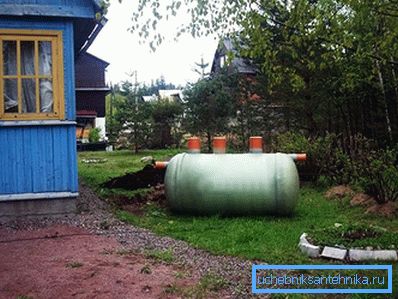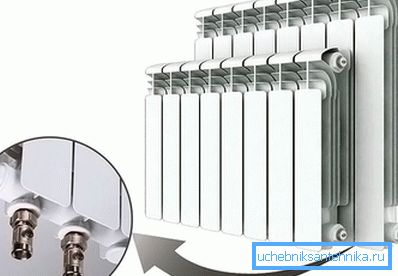How to choose a bimetallic radiator
Heating of dwellings is carried out in most cases with the help of batteries familiar to all. In the recent past, this word meant an ugly and cumbersome cast-iron product, hanging under the window sill. The current manufacturers of heating equipment offer a large selection of beautiful and practical heat exchangers for the apartment, able to fit into any interior. Today, bimetallic radiators are the leaders in this category, pushing into the background all other types of heaters. Production and installation of them were established relatively recently, but over 10–15 years they have managed to become popular. Let's find out how to choose a bimetallic radiator.
Benefits

The popularity of bimetallic radiators is explained by a number of their positive properties. Here are some of them:
- Possess high heat emission. The room warms up quickly, while the temperature of the radiator itself is not reduced.
- Are reliable. Some manufacturers give a guarantee for this type of heaters up to 25 years, while for other types of batteries the warranty period is not more than 10 years.
- Universal in use. They can be installed in any room that requires heating, while it is possible to install both in new buildings and when replacing heating.
- Have increased strength. This characteristic indicates what kind of loads the product can withstand, and for radiators this indicator is the ability to be subjected to high pressure in the supply system. Bimetallic batteries can withstand pressures up to 35 atmospheres. Central heating is designed for 14 atmospheres, and systems in private homes are not subjected to loads of more than 10 atmospheres.
- They have a small weight and size, which allows the installation to be done quickly and in almost any suitable place.
- As a rule, they look attractive.
Kinds

Bimetallic radiators can be classified by the following parameters:
- Sectional. You can assemble the required number of sections based on the area required for heating. In this case, you can save by accurately calculating the desired battery size. One section is able to provide 2 m of heat2 the premises.
- Converter This type of heater is assembled in the factory, they have their own size. They create increased heat transfer due to design features and, accordingly, cost more.
The use of bimetallic radiators was recommended by the Research Institute of Plumbing in 1995, but the high cost of such products, in comparison with their cast-iron counterparts, initially pushed potential buyers away. However, in a relatively short time, the high performance of these heat exchangers inclined consumers to their side, and they were the first in this category of goods.
Special features

The name of this type of radiator indicates the presence of two metals in them (bi-prefix), aluminum and steel are used for their manufacture. In the aluminum case, which provides rapid heat transfer to the environment, there are steel pipes. The shell, which may be subject to oxidation when in contact with water, does not come into contact with it, and the tubes through which water passes through, have enhanced anti-corrosion properties.
In appearance, this type of battery is very similar to aluminum radiators, but they weigh much more. If the battery is not installed, you can see metal of a different color inside the case.
The use of bimetallic radiators is most effective in centralized heating systems due to the low quality of the coolant. Water hardness in the system will not matter.
Steel is oxidized when interacting with oxygen, but there is no air access to it. Such qualities as increased resistance to mechanical and hydraulic shocks will positively affect the performance of this type of heater in multi-family buildings.
Bimetallic radiators are divided into two types: bimetallic and submetallic. In the first case, the battery case is aluminum, and the water-conducting pipes are steel. With this design, the strength becomes very high, the possibility of leakage is excluded.

In the polibimetallic version, steel pipes only reinforce the vertical channels, that is, the contact of water and aluminum is not excluded, which during operation can lead to a leakage.
At the same time, they have increased heat emission and the price is slightly lower. When choosing the second option, you should pay special attention to how the steel tabs are fixed, the fixation should be tight.

So, bimetallic radiators have enough advantages to make a choice in their favor. If you decide to purchase such batteries, then buy them from bona fide suppliers who will provide you with genuine products. If you have questions on the topic or you wish to add material to the article, then write comments. Your experience will be very useful to us!
Video
How to choose the right radiator, you can learn from the video: